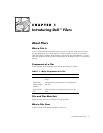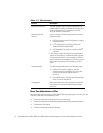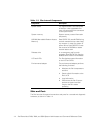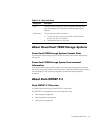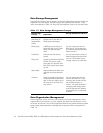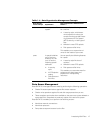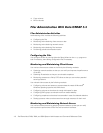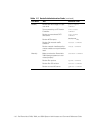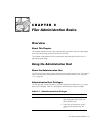
1-6 Dell PowerVault 720N, 740N, and 760N System Administrator and Command Reference Guide
'DWD6WRUDJH0DQDJHPHQW
Data ONTAP 5.3 stores data on disks in PowerVault 700N storage systems. Disks are
organized into RAID groups, and RAID groups are organized into volumes. These
items are explained in Table 1-5, along with what aspects of them you can administer.
'DWD2UJDQL]DWLRQ0DQDJHPHQW
Data is organized in files, which are the smallest unit of data management. Users
organize files into directories, and you organize directories into file systems, which
are known as volumes. You can also organize directories into special directories called
qtrees. Major data organization concepts that are special to filers are explained in
Table 1-6.
7DEOH'DWD6WRUDJH0DQDJHPHQW&RQFHSWV
'DWD6WRUDJH
&RQFHSW ([SODQDWLRQ
6WRUDJH$GPLQLVWUDWLYH$FWLRQV
RAID (Redun-
dant Array of
Independent
Disks)
A feature that enables file
access even if one disk in a
RAID group is damaged.
RAID group A RAID group consists of a
parity disk and up to 27 data
disks, and optional spare
disks.
You can control the size of a
RAID group. This enables you
to customize backups and disk
failure recovery.
Data disks Hold the data that clients
access.
You can control the number of
data and spare disks that a filer
can use. This enables you to
manage recovery if a disk fails.
Parity disk Contains information that Data
ONTAP 5.3 uses to recon-
struct data if a data disk fails.
Each RAID group has one par-
ity disk.
Spare disks Replace failed data disks auto-
matically with reconstructed
data.
Volumes Pools of storage composed of
multiple disks that store client
data. A filer can support up to
23 volumes or can have only
one volume.
You can specify the size of a
volume, add disks to it, copy
volumes, and control the num-
ber of RAID groups in a
volume. This gives flexibility in
managing data storage tasks
such as backups and restores,
and enables you to customize
volumes.






